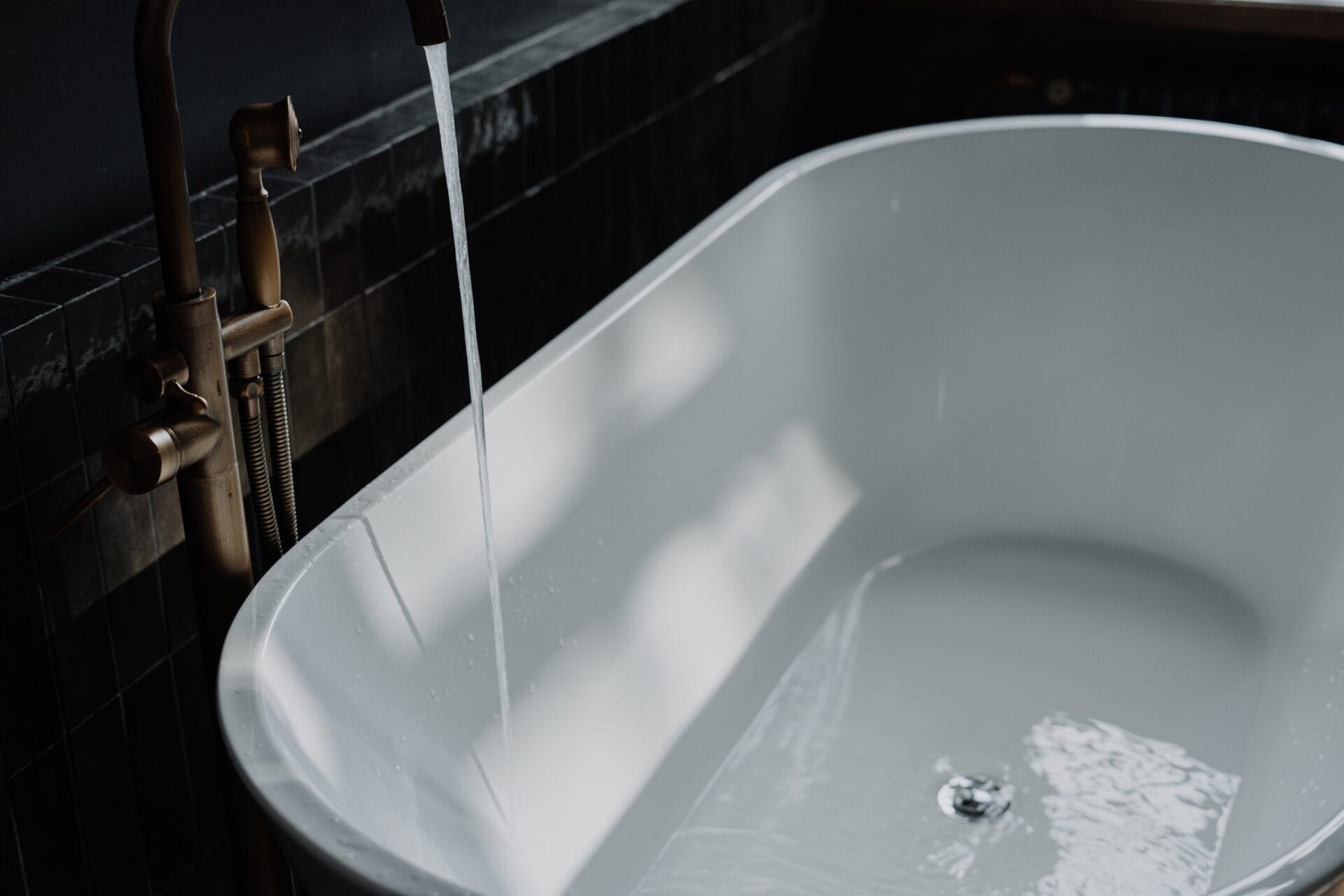Installing a water softener for your shower is a great way to improve the quality of your water and make it more comfortable for bathing. Water softeners can help reduce the amount of hard minerals in your water, making it more pleasant and easier to lather soap and shampoo. Installing a water softener for a shower can be fairly straightforward, but there are some key steps you should follow to ensure it’s done correctly. In this guide, we will cover the process of installing a water softener in your shower so you can enjoy softer, better-quality water.A water softener for shower is a device that removes hard minerals such as calcium and magnesium from the water supply, making it softer and gentler on skin. This type of softener is usually installed at the point of use in a home, such as a bathroom shower, to provide softened water specifically for use in bathing. The device works by passing the shower water through an ion exchange resin which removes the hard minerals from the water and replaces them with sodium ions.
The Benefits of Installing a Water Softener for Shower
Water softeners are an invaluable tool for improving the quality of your shower water. Not only do they make the water feel softer and more luxurious, but they also help to remove minerals and other contaminants that can affect your skin, hair, and nails. In addition, installing a water softener for your shower can save you money in the long run by reducing the amount of soap and shampoo needed to get a good lather. Here are some of the benefits of installing a water softener for your shower:
First, installing a water softener can help reduce mineral buildup in your shower head and pipes. Hard water contains high levels of calcium and magnesium, which can accumulate over time in household pipes and fixtures, resulting in reduced water flow and discolored or smelly tap water. By using a water softener to remove these minerals from the shower water before it enters your home, you can prevent mineral buildup in your plumbing system.
Second, using a water softener for your shower will help protect your skin from irritation caused by hard minerals. Hard minerals such as calcium and magnesium can cause dryness, itchiness, redness, flaking skin and even breakouts if left on skin for too long. By using a water softener to reduce these hard minerals in the shower before they come into contact with your skin, you can help keep it looking healthy and hydrated.
Finally, installing a water softener will allow you to use less soap or shampoo when you take showers. Soap or shampoo doesn’t lather well when used with hard tap water due to its high mineral content. This means that you must use more soap or shampoo than necessary to get a good lather – which leads to higher costs over time. With a properly installed water softening system in place however, you’ll be able to use much less soap or shampoo while still getting great results with every shower.
In conclusion, there are many benefits to installing a water softener for your shower. Not only will it make the experience more luxurious by providing softer-feeling showers but it will also help protect your skin from irritation caused by hard minerals found in tap water as well as allow you to save money on soap and shampoo over time by reducing how much is needed for each use.
How To Choose The Right Water Softener For Shower
When it comes to choosing the right water softener for your shower, there are several important factors to consider. The type of water softener you select should depend on your needs and lifestyle. Here are some tips to help you make the best decision for your home.
First, consider the size of your shower. Depending on the space, you may need a larger or smaller water softener. If you have a small shower, then a single-tank system may be adequate. Alternatively, if your shower is large, then a dual-tank system may be necessary.
Next, consider the type of water entering your home. Hard water contains minerals that can cause buildup in plumbing fixtures and reduce the lifespan of appliances such as washing machines and dishwashers. Softened water will remove these minerals and help extend the life of these appliances. If your home has hard water, then a salt-based system is recommended to effectively soften it.
Finally, consider how often you use hot water in your shower. If you use hot water frequently, then a high-capacity system may be necessary to ensure that softened water is available when needed. On the other hand, if you rarely use hot water for showers, then a lower capacity system should suffice.
By taking these factors into consideration when selecting a water softener for your shower, you can ensure that you choose the right one for your needs and lifestyle. With the right system in place, you can enjoy softer skin and hair as well as extend the life of plumbing fixtures and appliances throughout your home.
Step 1: Buy a Water Softener
The first step in installing a water softener for your shower is to purchase the right one for your needs. You will need to consider the size of your shower, the type of softener you need, and the features that you want. Most water softeners come with all the necessary components for installation. It is important to read the instructions carefully before purchasing so that you know what tools and supplies you will need. Once you have purchased the unit, it is time to move onto installation.
Step 2: Prepare for Installation
Before beginning installation, make sure that you have all of the proper tools and supplies needed. This includes a screwdriver, wrench, pliers, pipe cutters, and any additional parts that may be required. If possible, try to enlist the help of an experienced plumbing professional to ensure that everything is done correctly.
Step 3: Install Piping
Once you have everything ready to go, it’s time to begin installing piping for your water softener system. Start by connecting all of your pipes according to the instructions provided with your unit. Be sure to use Teflon tape on all threaded connections and make sure they are tight so there are no leaks. Once this is complete, turn off your home’s main water supply before continuing.
Step 4: Connect Your Water Softener
Now it’s time to connect your new water softener unit itself. Start by attaching it directly onto your plumbing system according to manufacturer’s instructions. Be sure not to overtighten any connections as this can damage components or cause leaks. Once connected securely, attach a plastic bypass valve which will allow you to run water around the system if needed.
Step 5: Test Your System
Once you have finished with all of your connections and installations its time test out your new water softening system! Turn on your home’s main water supply valve and check for any leaks or other issues with connections made during installation. If everything looks good then it’s time for one last test – running some tapwater through the system! Try out different taps around your house and compare them against each other before considering yourself done.
Conclusion
Installing a water softening system can be quite an undertaking but following these simple steps can help ensure that everything goes smoothly! With a bit of patience and some careful planning, anyone can install their own water softening system in no time at all! And once installed properly enjoy softer skin after each shower!
Requirements to Install a Water Softener for Shower
Installing a water softener for your shower is an effective way to reduce hard water buildup and improve the quality of your shower water. However, before investing in a softener for your shower, it is important to make sure that you have all the necessary components in place. Below are the requirements you must meet to successfully install a water softener for your shower:
The first requirement is that you have an existing plumbing system. This means that you must have running water and access to the main plumbing line. If you do not already have an existing plumbing system, then you will need to have one installed before installing a water softener.
The second requirement is that you must have access to electricity. Most water softeners require electricity in order to operate properly. If you do not already have access to power, then it may be necessary to hire an electrician to wire your home for power.
The third requirement is that you must choose the right type of softener for your needs. There are various types of softeners available, so it is important to research the options and choose one that will best suit your needs. Additionally, it is important to consider how much space you have available for installation.
Finally, once all of these requirements are met, then you can begin the installation process. This includes connecting the water lines from the main plumbing line and running them through the walls or ceiling of your bathroom before connecting them to the softener unit itself. Additionally, it will be necessary to properly secure all connections with clamps or other fasteners in order ensure proper operation and avoid leaks.
By following these requirements and taking the time to properly install a water softener for your shower, you can help ensure that your family enjoys higher quality water while also reducing hard water buildup in fixtures and appliances.

Types of Water Softeners Available for Shower
Water softeners are a great way to reduce the hard water mineral content in your shower, resulting in a cleaner, softer feeling when you shower. There are a number of different types of water softeners available for shower use, each with their own unique features and benefits.
The most common type of water softener used for showers is an ion-exchange unit. These units use a resin bed to exchange the minerals in hard water with sodium or potassium ions, effectively eliminating them from the water supply. Ion-exchange units require regular maintenance and can be expensive to install initially, but they can last for many years with proper care.
Another option is a reverse osmosis system, which uses a semi-permeable membrane to filter out contaminants from the water supply. These systems are more expensive than ion-exchange units but require less maintenance and can remove more impurities from the water than an ion-exchange system can.
Salt-free water softeners are also available for shower use. These systems work by inhibiting the formation of mineral scale on surfaces, rather than actually removing them from the water itself. Salt-free systems require no maintenance and can be installed relatively easily, but they may not be as effective as other types of softeners when it comes to reducing hard water minerals in your shower.
Finally, there are magnetic or electronic descalers that use electromagnetic fields to reduce scaling on surfaces exposed to hard water minerals. These systems are relatively inexpensive and do not require any maintenance, but they may not be as effective as other types of softeners in reducing mineral content in your shower’s water supply.
When it comes to choosing the right type of water softener for your shower needs, it is important to consider how much maintenance is required, how much money you are willing to spend initially on installation costs, and what type of filtration system will best suit your needs. By taking these factors into account you will be able to find the perfect type of softener for your home’s needs and enjoy cleaner, softer showers for years to come!
Preparing Your Home For Installing A Water Softener For Shower
Installing a water softener for shower is a great way to improve the quality of water in your home. It helps reduce the amount of calcium and magnesium in the water, which can cause dry skin and other problems. The process of installing a water softener is fairly straightforward, but it’s important to prepare your home before beginning installation. Here are some tips for preparing your home for installing a water softener for shower:
First, make sure that you have all the necessary tools and materials on hand for the job. This includes a wrench or pliers, a drill, some screws or nails, a screwdriver, and any other items you might need. You’ll also need to choose the right size softener for your home. Check with your local hardware store or online retailer to determine what size will be suitable.
Next, identify where you want to install the water softener. It’s important to note that the unit should be installed near an existing plumbing system so that it can be connected easily. Make sure that any pipes or wires in the area are clearly marked so that you don’t damage them while installing the unit.
Once you’ve identified where you want to install it, take some time to clean up around the area. Remove any debris that might interfere with installation and make sure there is no standing water on the ground or nearby surfaces. This will help ensure that everything proceeds smoothly during installation.
Finally, once everything is ready, turn off all power sources in the area and unplug any appliances or electronics near where you plan to install the unit. This will help prevent an electrical shock while working on wiring or plumbing.
Following these simple steps when preparing your home for installing a water softener for shower can help ensure success when it comes time to actually install it. If you have any questions regarding installation procedures or materials needed, be sure to consult with an experienced professional before beginning work.
Connecting The Fittings To Install A Water Softener For Shower
Installing a water softener for shower is not a difficult task. It requires basic plumbing knowledge and the right materials to get the job done. The first step is to connect the fittings, which is necessary for proper installation of the water softener. This includes attaching the inlet and outlet pipes, as well as any other fittings that may be included in the package. It is important to use quality components when connecting these fittings since they will be responsible for regulating the flow of water throughout the system. When connecting the fittings, it is important to make sure they are secure and properly sealed to ensure no leaks occur. Once all of the fittings are connected, it is time to install the water softener itself.
The process of installing a water softener for shower involves attaching it to both hot and cold water lines in order to achieve optimal results. It is important to ensure that all connections are properly tightened and sealed before beginning use. Additionally, when installing a new water softener for shower, it is important to read all of the instructions included with it carefully before beginning installation as some models may require additional steps or materials in order to complete their setup properly. Finally, once everything has been installed correctly, it is essential to test out the system by running some hot and cold water through it before using it regularly in order to ensure that everything works as expected.
By following these steps carefully, anyone can connect their own fittings and install a new water softener for shower with relative ease. Doing so will ensure that your showers are always comfortable and free from hard-water buildup or mineral deposits. Additionally, regular maintenance on your system will help keep it running smoothly and efficiently over time so you can enjoy softer showers for years to come!

Conclusion
Installing a water softener for your shower is an easy and cost-effective way to help improve your home’s water quality. By removing hard minerals from the water, you can enjoy softer skin, shinier hair, and better tasting food. With just a few simple steps, you can easily install a water softener for your shower. Make sure to purchase the right one for your needs, as well as follow all safety procedures when installing it. With proper care and maintenance, you can enjoy better water quality in your home for years to come.
Overall, installing a water softener for your shower is a great way to improve the quality of life in your home. It’s easy to do and cost-effective, so there’s no reason not to take advantage of the many benefits it offers. With just a little time and effort, you can have clean and soft water flowing through your shower in no time!

